| Lesson 3 | The impact of e-commerce on business models |
| Objective | Describe how e-commerce influences and changes the dynamics of business. |
Impact of ecommerce on Business Models
Describe how ecommerce influences and changes the dynamics of business. Why has Web-based ecommerce already revolutionized business in so many industries? Although there are many different factors, the overriding reason has to do with geographic market reach.
Quite simply, companies that previously were limited in terms of geography, marketing, and distribution, can instantly become global players by selling goods and services over the Web. On the Web, all businesses automatically possess a worldwide reach.
On the surface, the Web's global reach can make for appealing stories. The Web offers the opportunity for businesses to dramatically alter the flow of products and services, and to change the playing field in many industries. As a result, start-up Web specialty businesses (the notorious "dot-coms") tried to take early mover advantage of the opportunities afforded by the Web's reach. Brick-and-mortar companies (companies which pre-existed Web-based e-commerce) reacted to the changes set in motion by the dot-coms, and fought back with their own Web-based e-commerce. In many cases, the brick-and-mortars, renamed "click-and-mortars" once they earned their Web stripes, creatively went beyond even the dot-coms in terms of their application of e-commerce.
On the surface, the Web's global reach can make for appealing stories. The Web offers the opportunity for businesses to dramatically alter the flow of products and services, and to change the playing field in many industries. As a result, start-up Web specialty businesses (the notorious "dot-coms") tried to take early mover advantage of the opportunities afforded by the Web's reach. Brick-and-mortar companies (companies which pre-existed Web-based e-commerce) reacted to the changes set in motion by the dot-coms, and fought back with their own Web-based e-commerce. In many cases, the brick-and-mortars, renamed "click-and-mortars" once they earned their Web stripes, creatively went beyond even the dot-coms in terms of their application of e-commerce.
Global Reach of the World Wide Web
A tiny business industry, like a handmade sweater maker in Vermont, can "become" a huge multinational company overnight by selling to buyers in Africa. Tiny parts manufacturers in eastern Europe can find entirely new procurement partners in Australia. Third-party service providers, like financial institutions, freight providers, and warehouses have access to an entirely new universe of partners over the Web. World Wide Web has the word 'world' in it. You have a Web site and everybody in the world can see you. Companies already have a portal to break into an overseas market, but many of them of them are overlooking that opportunity because their website does not contain content in other languages.
Once upon a time, in the vast digital landscape, there existed a concept known as Global Reach. It was not just a term, but a strategic initiative, a guiding star for businesses venturing into the boundless realm of the Internet. This initiative was a bridge, connecting a company with the world, reaching out to both loyal customers and those who had yet to discover their services. In this story, the Internet played the role of a mighty enabler. It allowed companies to unfurl their digital banners, showcasing themselves to a global audience. Their websites became more than mere pages; they were vibrant marketplaces, alive with product information and bustling with customer service. Amidst this digital bazaar, customers found a new power. They could, with a few clicks and taps, place orders from the comfort of their homes. This modern convenience cast away the old burdens of long-distance phone calls and the slow dance of postage. Time, once a relentless foe, now became a friend both to the customer and the company. However, the path to achieving Global Reach was not just about embracing technology. It was also about trust, ethics, and connection. A company on this journey would weave a code of ethics into their tapestry, a commitment to doing right by their customers. They would craft a clear purchasing policy, a map guiding transactions in this new world. Alongside, they would offer additional contact information, ensuring that they were never more than a message away. And, of course, they would provide ample product information, turning each item in their inventory into a story waiting to be told. Thus, in this digital age, the quest for Global Reach was more than a business goal. It was a narrative of connection, innovation, and the endless possibilities when a company ventured into the realm of ecommerce, armed with the fundamentals and a vision for a connected world.
Once upon a time, in the vast digital landscape, there existed a concept known as Global Reach. It was not just a term, but a strategic initiative, a guiding star for businesses venturing into the boundless realm of the Internet. This initiative was a bridge, connecting a company with the world, reaching out to both loyal customers and those who had yet to discover their services. In this story, the Internet played the role of a mighty enabler. It allowed companies to unfurl their digital banners, showcasing themselves to a global audience. Their websites became more than mere pages; they were vibrant marketplaces, alive with product information and bustling with customer service. Amidst this digital bazaar, customers found a new power. They could, with a few clicks and taps, place orders from the comfort of their homes. This modern convenience cast away the old burdens of long-distance phone calls and the slow dance of postage. Time, once a relentless foe, now became a friend both to the customer and the company. However, the path to achieving Global Reach was not just about embracing technology. It was also about trust, ethics, and connection. A company on this journey would weave a code of ethics into their tapestry, a commitment to doing right by their customers. They would craft a clear purchasing policy, a map guiding transactions in this new world. Alongside, they would offer additional contact information, ensuring that they were never more than a message away. And, of course, they would provide ample product information, turning each item in their inventory into a story waiting to be told. Thus, in this digital age, the quest for Global Reach was more than a business goal. It was a narrative of connection, innovation, and the endless possibilities when a company ventured into the realm of ecommerce, armed with the fundamentals and a vision for a connected world.
Organization for Economic Co-operation and Development
The Organization for Economic Co-operation and Development (OECD) is still very much in existence.
In fact, it's currently quite active and influential. Here's some evidence to reassure you:
- Their website: The OECD website (oecd.org) is regularly updated with news, publications, and information about their ongoing projects and initiatives.
- Recent activity: Their website highlights recent activities like the November 2023 release of "Health at a Glance 2023: Key findings for the United States" and the May 2023 report "Joining Forces for Gender Equality: Key findings for the United States." These demonstrate their continuing engagement with research and policy analysis.
- Expanding membership: In January 2022, they decided to open accession discussions with Argentina, indicating their relevance and continued growth.
- Media presence: You can find numerous articles and news reports mentioning the OECD and their work, further showcasing their current status.
The Web affects industry change in several areas, including competition, marketing, service, and sales. The risks are real, and businesses cannot enter into e-commerce lightly. The following series of images describes some of the specific business model changes and risks associated with the Web:
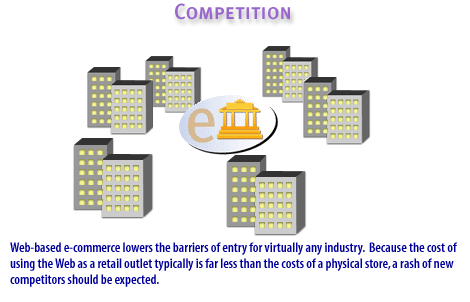
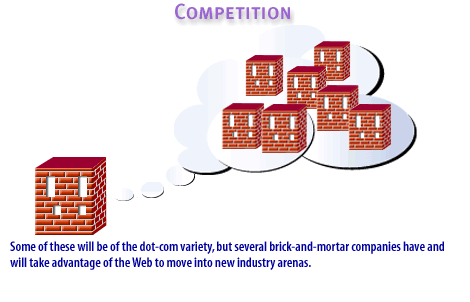
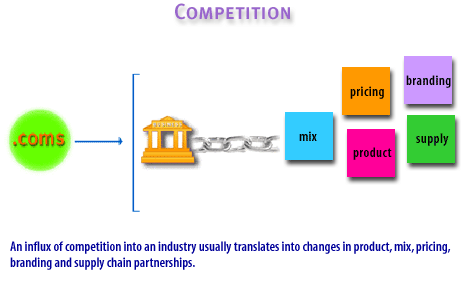
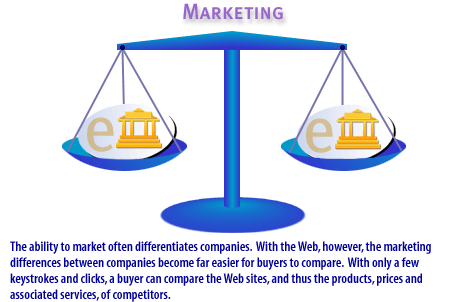
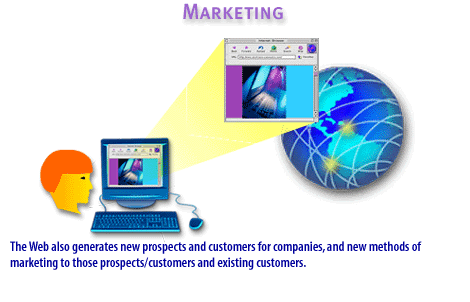
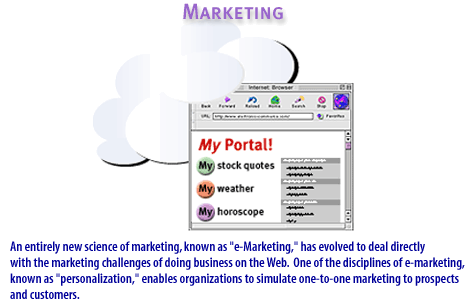
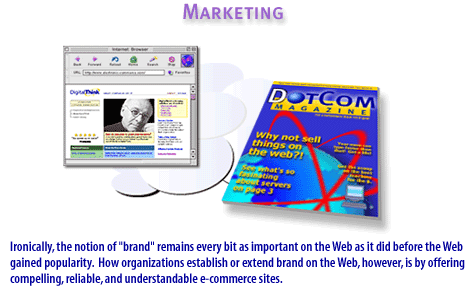
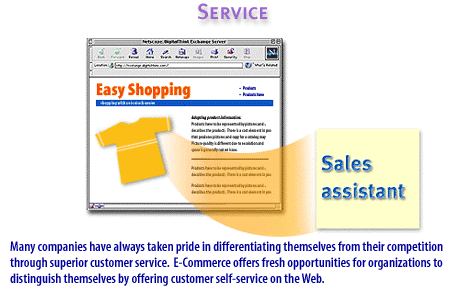
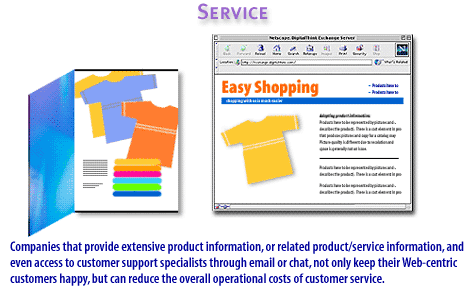
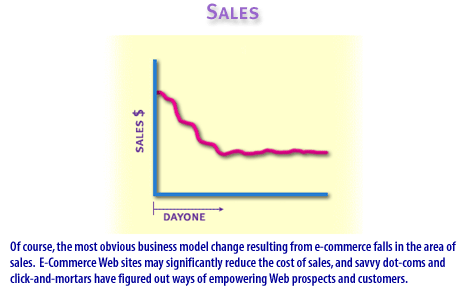
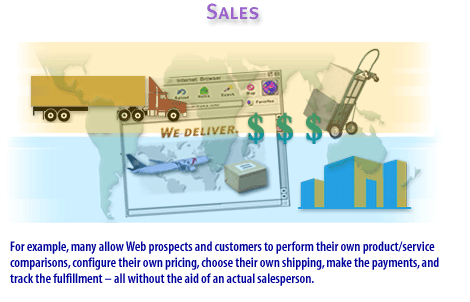
- Web based ecommerce lowers the barriers of entry for virtually any industry. Because the cost of using the web as a retail outlet typically is far less than the costs of a physical store, a rash of new competitors should be expected.
- Brick and mortar companies will take advantage of the web to move into new industry arenas.
- An influx of competition into an industry usually translates into changes in product, mix, pricing, branding and supply chain partnerships.
- The ability to market often differentiates companies. With the web, however, the marketing differences between companies become far easier for buyers to compare. With only a few keystrokes and clicks, a buyer can compare the web sites, and thus the products, prices and associated services of competitors.
- The web generates new prospects and customers for companies, and new methods of marketing to those prospects/customers and existing customers.
- A new science of marketing known as e-marketing has evolved to deal directly with the marketing challenges of doing business on the web. One of the disciplines of e-marketing. known as personalization, enables organizations to simulate one-to-one marketing to prospects and customers.
- The notion of brand remains every bit as important on the web as it did before the web gained popularity.
- Many companies have always taken pride in differentiating themselves from their competition through superior customer service. ecommerce offers new opportunities for organizations to distinguish themselves by offering customer self-service on the web.
- Companies that provide extensive product information, or related product/service information, and even access to customer support specialists through email or chat, not only keep their web-centric customers happy, but cna reduce the overall operational costs of customer service.
- Of course, the most obvious business model change resulting from e-commerce falls in the area of sales. E-commerce web sites may significantly reduce the cost of sales and savvy dot-comes and click-and-mortars have figured out ways of empowering web prospects and customers.
- Allow web prospects and customers to perform their own product/service comparisons, configure their own pricing, choose their own shipping, make the payments, and track the fulfillment, all without the aid on an actual salesperson.
Impact of ecommerce
Impact of global reach, virtual sales, and online payment
With the incredible global reach offered by e-commerce comes an array of risks that many businesses and organizations never even considered.
Global reach, virtual sales, and online payment all carry dangerous risks that can potentially put a company out of business.
E-Commerce Management
Risks of Web-based e-commerce
- Payment fraud and other security issues,
- new forms of tax and customs considerations, and
- misrepresentation of products and services
In summary, Web-based e-commerce empowers all kinds of businesses, start-ups and established players alike, to test new markets, form creative partnerships, and chase previously untouchable business opportunities on a worldwide basis by means of a few simple keystrokes and clicks.
In the next lesson you will learn more about B2B, B2C, and e-marketplaces.
Web Business Model Changes
Click the exercise link below to complete an exercise on specific business model changes associated with the Web.
Web Business Model Changes
Web Business Model Changes